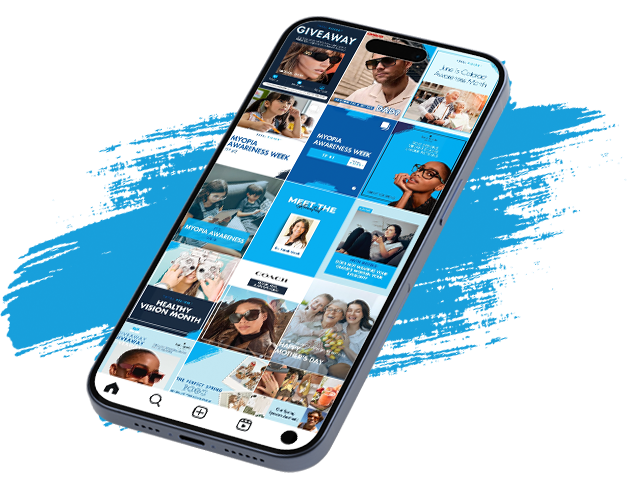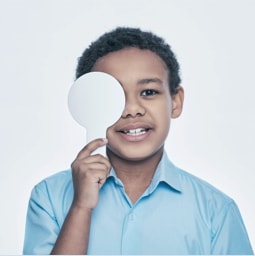Preserve Your Child’s Gift of Sight
Have you ever asked yourself how you can tell if your child has an eye problem? How can your child tell if they have an eye problem? There are many things to consider when you become a parent, and your child’s eyesight is one of the many important things you look after.
Your child uses their vision to learn more about their world. Their eyes are crucial for playing sports, taking up hobbies, or learning in the classroom. But when an eye problem occurs, it can affect their performance with the things they love.
Eye exams can help detect these issues and provide your child with an opportunity to get back to focusing on what matters most to them.
Preserve your child’s gift of sight. Please, book an appointment with our team today!
When Should Your Child Have an Eye Exam?
It’s important to monitor your child’s eye and vision development as they grow older. To ensure your child receives the proper care for their development, we recommend the following schedule as provided by the American Optometric Association (AOA).
Certain eye conditions can develop around major visual milestones, so it’s important to make sure their eyes are as healthy as possible during these times. However, not all exam schedules are the same for every child, and we may recommend a different frequency depending on their health and family health history.
Toddlers (1 to 2 Years Old)
Toddlers should have an eye exam with us at 1 year of age. During this visit, we’ll check their visual skills (including binocular vision, tracking, and depth perception) and assess their eye health to search for any developing eye conditions.
Preschoolers (3 to 5 Years Old)
Common eye issues like amblyopia (lazy eye) and strabismus (crossed eyes) can occur around the age of 3, making it important for your child to have another eye exam around this age.
If these conditions aren’t corrected as early as possible, they could affect how your child performs in school or play sports.
School Age (6 to 17 Years Old)
Your child should have an eye exam before beginning the first grade and then every year after that. Annual eye exams can help detect common issues we’ve mentioned before, like amblyopia and strabismus, as well as myopia (nearsightedness).


Common Childhood Eye Problems
Myopia
Myopia (nearsightedness) is one of the most common eye conditions worldwide. The condition is so widespread, in fact, that studies believe that nearly half of the entire world will have myopia by 2050.
Myopia occurs when the eye grows too long or if the cornea becomes too steep. When this happens, it can prevent the light from reaching your child’s retina, resulting in blurry vision. Our team can provide your child with a lens prescription to keep their vision clear.
Amblyopia
Amblyopia is a common eye condition characterized by a wandering eye. This eye may wander for various reasons, but untreated cases can lead to permanent vision problems.
Children don’t outgrow amblyopia, but it can be corrected with treatments like prisms, eye patches, corrective lenses, or eye exercises.
Strabismus
Strabismus is an eye condition characterized by both eyes turning in different directions simultaneously. This condition if your child develops poor muscle control around the eyes or if they have a refractive error that causes it.
With strabismus, your child’s eyes send different images to the brain, sometimes causing double vision or poor depth perception. If your child doesn’t receive treatment, their brain could start ignoring images from one of their eyes, leading to poor vision in that eye.
Strabismus, like amblyopia, doesn’t go away with age. Your child will need to start a specific strabismus treatment plan, which could include corrective lenses and vision therapy.
Conjunctivitis
Conjunctivitis, also known as pink eye, is a common eye condition among children. There are several different types of conjunctivitis, but the symptoms remain relatively the same. These symptoms can include:
- Redness
- Tearing
- Discharge
- Itchiness
- Grittiness
Treatment may depend on the type of conjunctivitis your child has. Allergic conjunctivitis may only need allergy medication or eye drops to soothe their symptoms. Bacterial conjunctivitis may require antibiotics. And viral conjunctivitis may just have to run its course, like a cold or the flu.
Viral and bacterial conjunctivitis are both highly contagious and can easily spread at school or on the playground. If your child has conjunctivitis, and please contact our team to get them the care they need.
Book Your Child’s Eye Exam Today
We dedicate ourselves to providing a comfortable, relaxed, and helpful experience for your child. If you want to show your child what healthy vision looks like, book an appointment with us today!
Come See What We’re About

Visit us
Find us in the same shopping center as Vons, UPS, and Colony Cleaners right on Regents Road. We offer parking in front of our practice with accessible options available.
- Phone: 858.546.1940
- Email: [email protected]
- 7770 Regents Road
Suite 104 - San Diego, CA 92122
Hours of Operation
- Monday: 10:00 AM – 5:00 PM
- Tuesday: 9:00 AM – 5:30 PM
- Wednesday: 9:00 AM – 5:00 PM
- Thursday: 9:00 AM – 5:30 PM
- Friday: 9:00 AM – 5:00 PM
- Saturday: Closed
- Sunday: Closed


Our Brands




Our Google Reviews
Be the First to Know,
Be the First to Win.
From eye health insights to exclusive giveaways, your feed just got a lot clearer.









